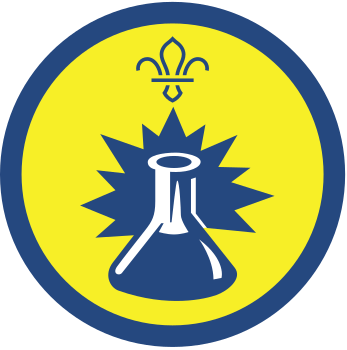
Make your own lava lamp
You’ll need
- Spoons
- Access to water
- Food colouring
- Empty glass jar or plastic bottle with a lid
- Child-safe effervescent tablet
- Cooking oil
- Funnel
- Jug
Before you begin
- Use the safety checklist to help you plan and risk assess your activity. There's also more guidance to help you carry out your risk assessment, including examples. Don’t forget to make sure all young people and adults involved in the activity know how to take part safely.
- Make sure you’ll have enough adult helpers. You may need some parents and carers to help if you’re short on helpers.
Run the activity
- Gather everyone in a circle. Ask if anyone knows what a lava lamp is or has seen one.
- Explain that you’ll be doing a science experiment and making your own DIY lava lamp.
- Divide everyone into pairs or small groups of up to four.
- Each pair or group needs an empty jar or plastic bottle, a funnel, access to cooking oil, food colouring and water, and a child-safe effervescent tablet.
- Everyone should fill a clean and empty jar or plastic bottle with water, about one third of the way full. They may want to use a funnel and have someone hold the jar or bottle in place.
- Once the water's in the jar, they should add a few drops of food colouring and stir with a spoon.
- Next, someone should add cooking oil until it's almost at the top of the jar. Again, they may want to use a funnel and hold the jar or bottle in place.
- Tell everyone to allow the water and oil to settle into place a little. Talk about why the oil and water don't mix. Explain that the oil floats on top because the water has a higher density (it's heavier) than the oil.
- Now, with adult supervision, break a child-safe effervescent tablet into four pieces then let people drop each piece, one at a time, into the jar.
- Ask everyone to write down or describe what's happening. Choose a few people to answer.
- See if anyone can notice the bubbles rising to the top. Ask people why they think the bubbles push through to the surface. Explain that the effervescent tablets create a gas called carbon dioxide when mixed with water and that gas forms the bubbles.
Reflection
How did everyone find that activity? Was it easy to make the lava lamps – or did you find it challenging? Did you have to persevere and try, try and try again?
You could choose three pairs to tell everyone what happened.
You may have had to keep trying and persevere. Sometimes science experiments don’t work, especially if it’s your first time doing them.
How do you think they compare to real lava lamps if anyone’s seen one? Is there anything you'd change if you did this experiment again?
Safety
All activities must be safely managed. You must complete a thorough risk assessment and take appropriate steps to reduce risk. Use the safety checklist to help you plan and risk assess your activity. Always get approval for the activity, and have suitable supervision and an InTouch process.
- Craft: Unusual substances
Supervise young people appropriately when they’re using unusual substances, such as powdered paint, ash or dirt. Be aware of any medical conditions that could be affected by what’s being used. Make sure you follow all relevant safety guidance or manufacturers guidelines, where available. Make sure you dispose of it appropriately too, in line with safety guidance.
- Science
Supervise young people, and only do science activities that are advised and age appropriate for your section. Test activities first, to make sure you’re confident you can lead them safely. Use protective clothing where necessary.
- If anyone needs help or struggles with fine motor skills, give them the opportunity to work in pairs with another young person, with a young leader or an adult volunteer.
- They could use a funnel to help pour water into the bottle or use larger materials. You could swap out the items for something easier to handle.
- It’s OK if some people take different roles in this activity – some people could choose the food colouring, some could break the tablet, some could pour using the jug and some could add the tablet to the jar. Anyone who finds the physical aspects tricky could come up with the next idea or direct everyone else – it’s always useful to have someone keeping an eye on everything to make sure the team’s working together and everyone’s involved.
- Make sure that all the materials are at a level that can be easily worked on by everyone, including wheelchair users.
All Scout activities should be inclusive and accessible.
You could turn it into a more in-depth science experiment.
You could try using different sized jars or bottles and seeing which works best, use different amounts of water or oil, use different types of oil, or use only a quarter, half and three quarters of a tablet to see how many bubbles each produces and compare.
Have different pairs adjust different elements of the experiment, then have people write down what happens in their experiment and compare it to another pairs results.
Young people can use whichever food colouring they want to.
